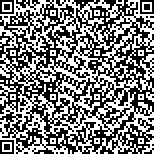本文已被:浏览 897次 下载 138次
投稿时间:2024-11-13 网络发布日期:2025-02-20
投稿时间:2024-11-13 网络发布日期:2025-02-20
中文摘要: 目的 对比AngioJet取栓序贯小剂量尿激酶溶栓与置管溶栓(CDT)在急性髂股静脉血栓治疗中的临床疗效及安全性。 方法 纳入2019年1月至2022年12月江苏省中医院收治的46例急性髂股静脉血栓患者,根据随机数字表法随机分为AngioJet取栓序贯小剂量尿激酶溶栓组23例(AngioJet组),CDT组23例。比较两组术后1 d下肢肿胀缓解率和术后1 d、12个月的静脉通畅率,比较尿激酶用量、住院时间及安全性指标(出血发生率、局部感染、血栓继发形成)。 结果 术后1 d,AngioJet组下肢肿胀缓解率[大腿:(81.35±6.78)% vs (43.56±7.32)%,t=6.107;小腿:(78.16±8.45)% vs (46.54±8.62)%,t=11.735]、下肢静脉通畅率[(90.68±17.89)% vs (68.56±15.34)%,t=6.478]均显著高于CDT组(P<0.05)。AngioJet组在尿激酶用量、出血发生率、住院时间、术后12个月血栓后综合征发生率均低于CDT组,差异有统计学意义(P<0.05)。两组留置导管相关感染、血栓继发形成、术后12个月静脉通畅率差异无统计学意义(P<0.05)。结论 AngioJet取栓序贯小剂量尿激酶溶栓在髂股静脉血栓治疗中可以快速缓解下肢肿胀、快速达到较高下肢静脉通畅率、缩短住院时间,可降低血栓后综合征发生率,安全性较高。
Abstract:Objective To compare the clinical efficacy and safety of AngioJet thrombectomy with sequential low-dose urokinase thrombolysis versus catheter-directed thrombolysis(CDT) in the treatment of acute iliofemoral deep venous thrombosis (DVT). Methods A total of 46 patients with acute iliofemoral DVT treated at Jiangsu Province Hospital of Chinese Medicine from January 2019 to December 2022, were randomly assigned into two groups using a random number table: 23 patients in the AngioJet thrombectomy with sequential low-dose urokinase thrombolysis group (AngioJet group) and 23 patients in the CDT group. The following outcomes were compared between the groups: the reduction rate of lower limb swelling 1 day post-surgery, venous patency rates at 1 day and 12 months post-surgery, urokinase usage, hospital stay, and safety parameters (bleeding, local infection, and thrombus recurrence). Results On day 1 post-surgery, the AngioJet group showed a significantly higher reduction rate of lower limb swelling [thigh: (81.35±6.78)% vs (43.56±7.32)%,t=6.107; calf: (78.16±8.45)% vs (46.54±8.62)%, t=11.735] and a higher venous patency rate [(90.68±17.89% vs (68.56±15.34)%, t=6.478] compared to the CDT group (P<0.05). The AngioJet group also used significantly less urokinase, had a lower incidence of bleeding, a shorter length of hospital stays, and a lower incidence of post-thrombotic syndrome (PTS) at 12 months (P<0.05). There was no significant difference between the two groups in terms of catheter-related infections, thrombus recurrence, or venous patency at 12 months (P>0.05). Conclusion AngioJet thrombectomy with sequential low-dose urokinase thrombolysis provides faster relief of lower limb swelling, a higher venous patency rate, shorter hospital stays, and a lower incidence of PTS, with higher safety in the treatment of iliofemoral DVT.
keywords: Iliofemoral venous thrombosis AngioJet Low-dose thrombolysis Catheter-directed thrombolysis Urokinase Post-thrombotic syndrome
文章编号: 中图分类号:R364.1+5 文献标志码:A
基金项目:江苏省卫生健康委员会科研项目(BJ14012);江苏省中医院人才引进项目(kgr0259);皖南医学院科研项目(JXYY202133)
附件
引用文本:
汪有锦,徐向贤,周涛,等.AngioJet取栓序贯小剂量尿激酶溶栓对比置管溶栓在急性髂股静脉血栓治疗中的疗效[J].中国临床研究,2025,38(2):200-204.
汪有锦,徐向贤,周涛,等.AngioJet取栓序贯小剂量尿激酶溶栓对比置管溶栓在急性髂股静脉血栓治疗中的疗效[J].中国临床研究,2025,38(2):200-204.
